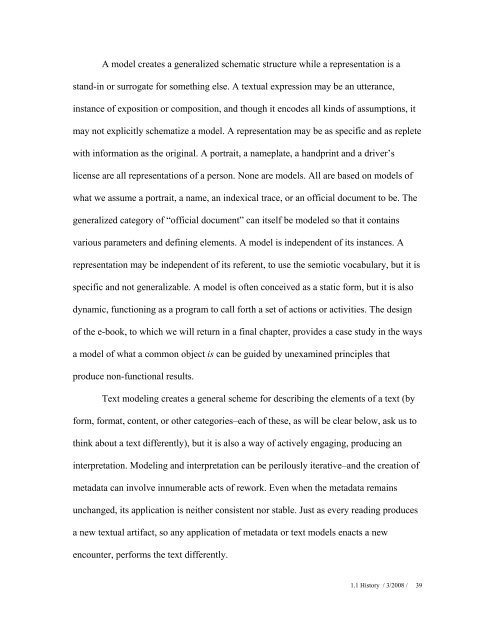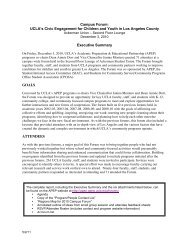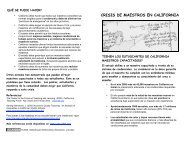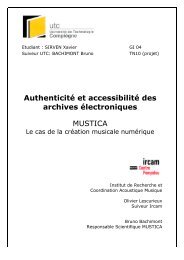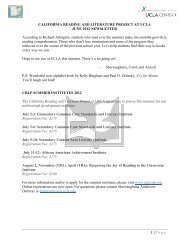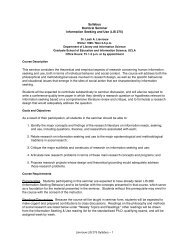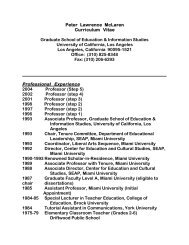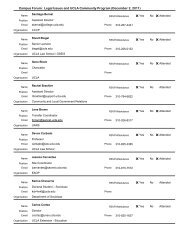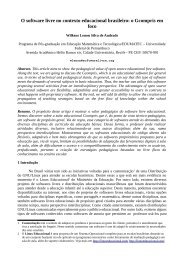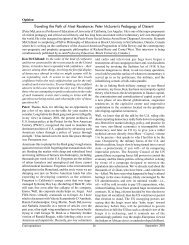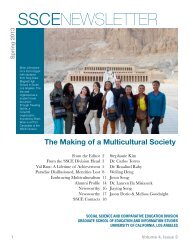1.1 From Digital Humanities to Speculative Computing - UCLA ...
1.1 From Digital Humanities to Speculative Computing - UCLA ...
1.1 From Digital Humanities to Speculative Computing - UCLA ...
You also want an ePaper? Increase the reach of your titles
YUMPU automatically turns print PDFs into web optimized ePapers that Google loves.
A model creates a generalized schematic structure while a representation is a<br />
stand-in or surrogate for something else. A textual expression may be an utterance,<br />
instance of exposition or composition, and though it encodes all kinds of assumptions, it<br />
may not explicitly schematize a model. A representation may be as specific and as replete<br />
with information as the original. A portrait, a nameplate, a handprint and a driver’s<br />
license are all representations of a person. None are models. All are based on models of<br />
what we assume a portrait, a name, an indexical trace, or an official document <strong>to</strong> be. The<br />
generalized category of “official document” can itself be modeled so that it contains<br />
various parameters and defining elements. A model is independent of its instances. A<br />
representation may be independent of its referent, <strong>to</strong> use the semiotic vocabulary, but it is<br />
specific and not generalizable. A model is often conceived as a static form, but it is also<br />
dynamic, functioning as a program <strong>to</strong> call forth a set of actions or activities. The design<br />
of the e-book, <strong>to</strong> which we will return in a final chapter, provides a case study in the ways<br />
a model of what a common object is can be guided by unexamined principles that<br />
produce non-functional results.<br />
Text modeling creates a general scheme for describing the elements of a text (by<br />
form, format, content, or other categories–each of these, as will be clear below, ask us <strong>to</strong><br />
think about a text differently), but it is also a way of actively engaging, producing an<br />
interpretation. Modeling and interpretation can be perilously iterative–and the creation of<br />
metadata can involve innumerable acts of rework. Even when the metadata remains<br />
unchanged, its application is neither consistent nor stable. Just as every reading produces<br />
a new textual artifact, so any application of metadata or text models enacts a new<br />
encounter, performs the text differently.<br />
<strong>1.1</strong> His<strong>to</strong>ry / 3/2008 /<br />
39


